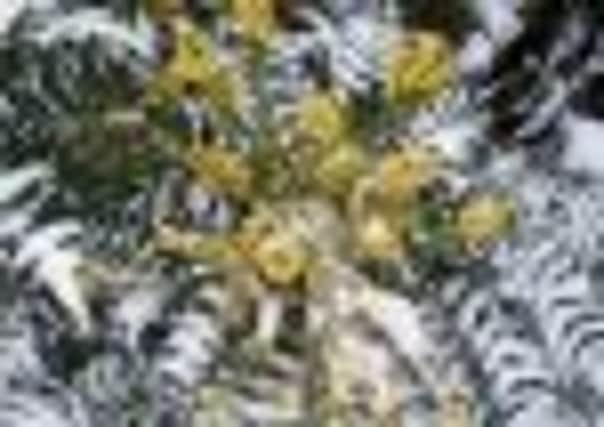Keeping the winter blues away with plants


Mahonia – media charity is a striking evergreen shrub with yellow honey scented flowers, Viburnium – bodnantense (deciduous shrub) has sweetly scented pink to white flowers opening continuously from early winter to early spring, Viburnium – tinus, an evergreen, produces tiny clusters of white flowers and Fatsia Japonica which has large glossy palmate leaves give a year round display and provides an exotic backdrop.
The most seasonal plant is the Holly tree (Ilex aquifolium), which is one of our most important British native evergreens.
Advertisement
Hide AdAdvertisement
Hide AdThis is the time when we are able to enjoy its glossy green leaves, clusters of red berries that add colour to our gardens and countryside; they can be quite striking in the woodlands.
In England, Holly is known by many different names, in Norfolk it is called Hulver, in Devon - Holme and in parts of Dartmoor - Holme Chase, other popular names include: Christ’s thorn, Hulver bush, Bat’s wings, Tinne and Holy tree.
In an old Christian legend the Holly is said to have sprung up under the footsteps of Christ as he trod the earth, the spines of the leaves became symbolic of “Crown of Thorns”, the red berries representing the drops of blood associated with his suffering. From this the Holly tree became known as “Christ’s Thorn” or the “Holy Tree”.
The Holly tree will grow in almost any soil provided it is not too wet, but gains its best results when planted in rich, sandy or gravely soil with good drainage and a moderate amount of moisture at the roots.
Advertisement
Hide AdAdvertisement
Hide AdMale plants must be planted amongst the female plants to produce a good crop of berries with a few exceptions such as J.C van Tol and Pyramidalis, which are self pollinating. Holly is very versatile, it can be used a specimen plant, a shrub, hedge, or tree in a woodland area.
In medicinal terms the Holly tree has been used in quite a number of ways, and with the latest cold spell, one might think twice about using it as the old remedy for chilblains - which was to take a branch and thrash it on your chilblains or “chase the chills out”, a rather painful method I suspect and I am not sure which is worse the chilblains or the cure!
You can even soak the leaves in vinegar and once left for a day and a night, it’s said to form a liquid that can help remove corns.
I haven’t tried any of these ures yet and not sure if I am going to!
Advertisement
Hide AdAdvertisement
Hide AdA word of warning though, the berries while favoured by birds and animals, are poisonous to human beings!
A few tips from the castle garden team:
n Clear ivy from bottom of hedges and trees (try and recycle as Christmas decoration).
n Continue winter digging if the soil is workable.
n Top dress your beds with good organic manure.
n Rake up the last of the leaves.
n Shake heavy snow off trees, shrubs and hedges where possible to stop damage.
n Insulate your garden taps and exposed pipes (hope it’s not too late)!
Happy Gardening!